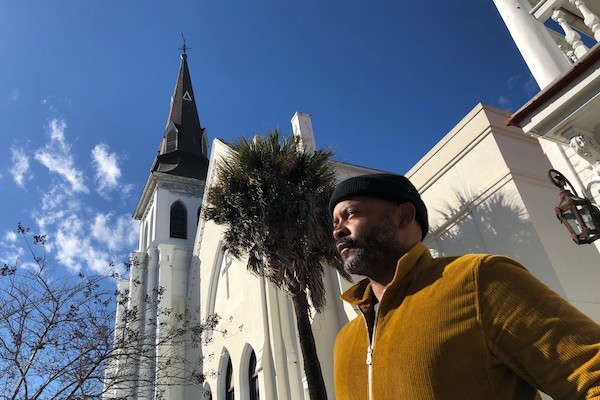On the November Saturday morning the 2020 election finally ended, Tyrone Beason was on his way to a rally for then-President Donald Trump outside the Maricopa County Election Department.
Beason, a staff writer with the Los Angeles Times, had been covering the race from Arizona. He found about 100 people, some with Trump flags, some armed, and a speaker with a huge, furry horned hat. By now, you probably know the one.
“He was consoling the crowd,” Beason said. “They were very somber. At one point, a lot of people got on their knees and were praying. Not for Biden but for Trump and for the election to be overturned.”
The man in horns roared that everything was going to be OK.
“You saw right then that this election was not over for them.”
As a journalist, Beason has spent his career in search of stories that help us understand each other. As a Black man, he’s trying to understand America itself and all its unhealed scars. For his latest project, My Country, he’s doing both.
Beason joined the Times in the summer of 2019 to cover what felt like a once-in-a-lifetime presidential election. Before that, he spent nearly 25 years at The Seattle Times. He knew once the election ended, he’d get to launch into a new project. He wanted to cover race, American identity and belonging. And he started thinking about doing that through a road trip.
Beason, who grew up in Kentucky, decided to return to a place he’d reported from at the start of the election — South Carolina. He wanted to visit places that triggered something in him. So he started on the steps of Mother Emanuel AME Church, where nine Black worshippers were killed by a white supremacist during a Bible study.
“It could have been members of my family at that church in 2015,” said Beason.
His journey from South Carolina to the inauguration in Washington, D.C., wasn’t pre-planned. He wanted to visit places that show who and where we are as a country — a civil rights museum in Orangeburg, South Carolina, run by a photojournalist; Salisbury, North Carolina, where a Black pastor leads a mostly white church; past the old Woolworth in Greensboro, where the student sit-in movement began in 1960; Charlottesville, Virginia, where the statues of Confederate generals still stand and the memory of white nationalists with torches still haunts residents; into the nation’s capital, then full of troops and fences.
It all felt like a quest, magical and sad, Beason said, where the final destination wasn’t really the point. He plans to keep peeling back the layers through his project, looking at our country’s scars and telling readers what he sees.
Beason’s series, which will be ongoing, begins with this note to readers:
“As a Black man in America, I’ve always struggled to embrace a country that promotes the ideals of justice and equality but never fully owns up to its dark history of bigotry, inequality and injustice. Now, more than any time in recent history, the nation seems divided over this enduring contradiction as we confront the distance between aspiration and reality. Join me as I explore the things that bind us, make sense of the things that tear us apart and search for signs of healing.”
View this post on Instagram
This piece originally appeared in Local Edition, our newsletter devoted to the telling stories of local journalists.







